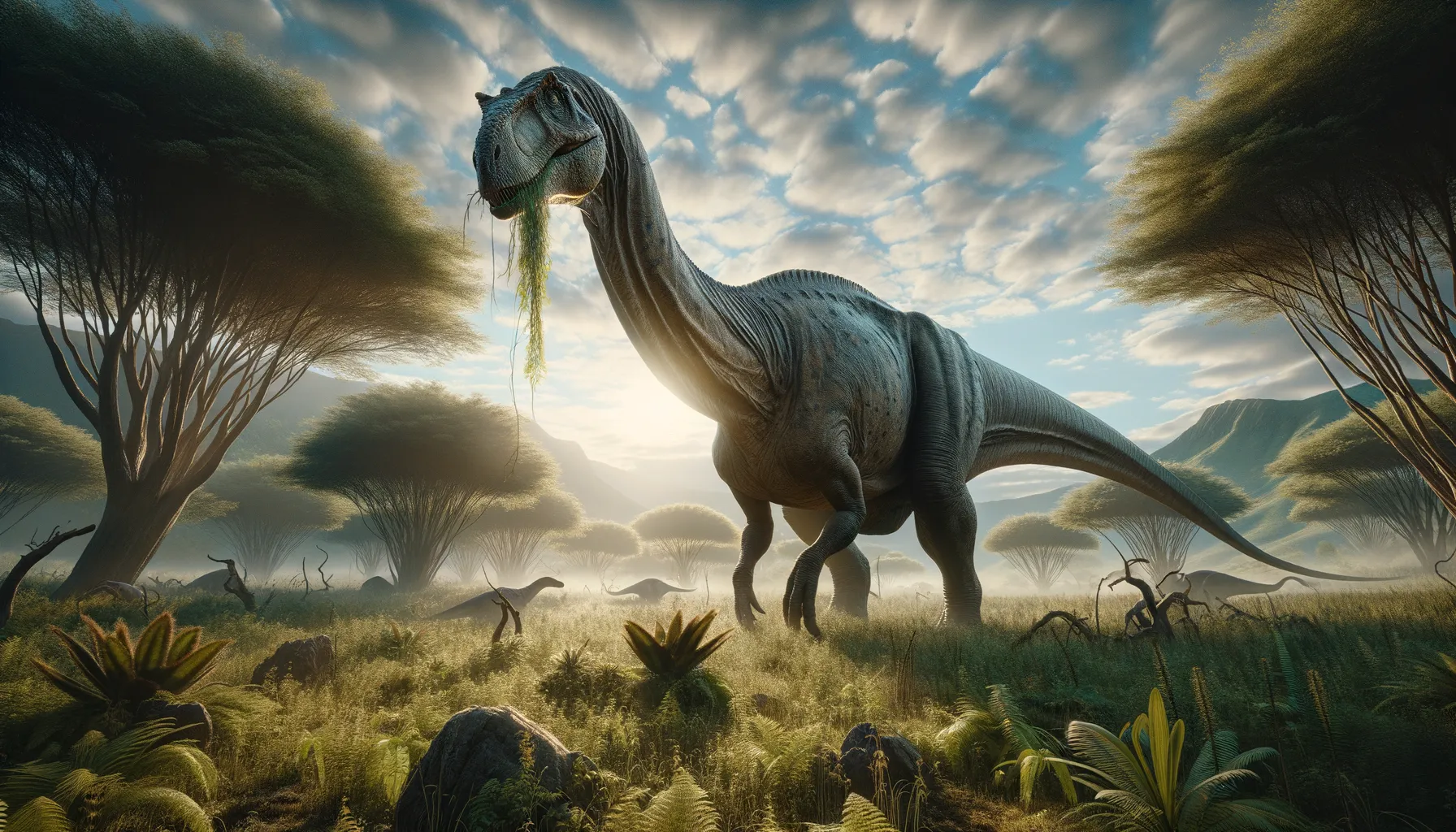
Eomamenchisaurus
Gentle giant of the Jurassic lands!
Period
Jurassic
Length
Measured up to about 20 meters long.
Height
Approximately 3 to 4 meters at the shoulder.
Weight
Estimated at around 10 to 15 tons.
Eomamenchisaurus was a massive, long-necked herbivorous dinosaur that roamed parts of Asia during the Jurassic period. With its impressive length and towering height, it likely relied on its size for protection against predators. Its long neck allowed it to reach high vegetation as well as forage over a wide area without moving much. Although known from limited fossils, Eomamenchisaurus provides valuable insights into the diversity of sauropods in its region.
Diet
Eomamenchisaurus was an herbivore, feeding primarily on plants. It likely consumed a wide variety of vegetation, which would have included leaves, ferns, and conifers, utilizing its long neck to access tall trees and plants.
Hunting
As a herbivore, Eomamenchisaurus did not hunt other animals. Instead, it spent much of its time foraging for plant-based food sources within its habitat.
Environmental challenges
Living in the Jurassic era presented challenges like fluctuating climates and vegetation availability. Eomamenchisaurus had to navigate vast landscapes to locate sufficient food. Its large size may also have required significant energy and resources to maintain, demanding efficient foraging strategies.
Speed
Eomamenchisaurus was likely slow-moving due to its large size.
Lifespan
Potentially lived several decades, similar to modern large reptiles.
First discovery
Found in the late 20th century in China.
Fun Facts
- Eomamenchisaurus was a dinosaur that lived during the Middle Jurassic period, about 174 million years ago.
- This dinosaur was a long-necked herbivore, belonging to the sauropod group, known for their massive size and long tails.
- Fossils of Eomamenchisaurus have been discovered in what is now the Sichuan Province of China.
- The name 'Eomamenchisaurus' means 'dawn Mamenchi lizard,' highlighting its early evolutionary stage among similar sauropods.
- Estimates suggest that Eomamenchisaurus could have been around 10 meters long, making it a relatively small sauropod compared to its later relatives.
- Its long neck likely helped it reach high vegetation, much like how a giraffe uses its neck today to browse treetops.
- Eomamenchisaurus had a relatively robust body considering its early place in the evolutionary timeline of sauropods.
Growth and Development
Eomamenchisaurus likely experienced rapid growth during its early years, typical of many sauropods. Its development was probably marked by an initial fast increase in size to avoid predation. Over time, it would continue to grow more slowly, developing its characteristic long neck and massive body.
Habitat
Eomamenchisaurus inhabited lush, vegetative areas that supported its herbivorous diet. These regions were likely rich in diverse plant life, ranging from ground-level ferns to towering conifers. Water sources were also a crucial aspect of its habitat, necessary for its survival and well-being.
Interaction with other species
As a large sauropod, Eomamenchisaurus may have coexisted with other dinosaurs, both herbivorous and predatory. Its size would deter predators, although it would likely be cautious around aggressive theropods. Competition with other large herbivores for resources might have been a common occurrence.
Natural lifespan
Eomamenchisaurus could have lived for several decades if it avoided predation and disease.
Reproduction
Reproduction likely involved egg-laying, with nests potentially being concealed or placed in safe areas. Hatchlings would have been vulnerable and reliant on growing quickly to survive. The parental care is debated, but it's possible adult dinosaurs did not extensively tend to young.
Social behaviour
Eomamenchisaurus may have lived in groups, as many sauropods are believed to have done. Group living would provide protection against predators and aid in locating food resources. However, its social structure remains largely speculative.
Fossil locations
The primary fossils of Eomamenchisaurus have been found in China, particularly in regions rich with Jurassic period deposits. These fossils provide insight into its anatomy and the environmental conditions of its time.
